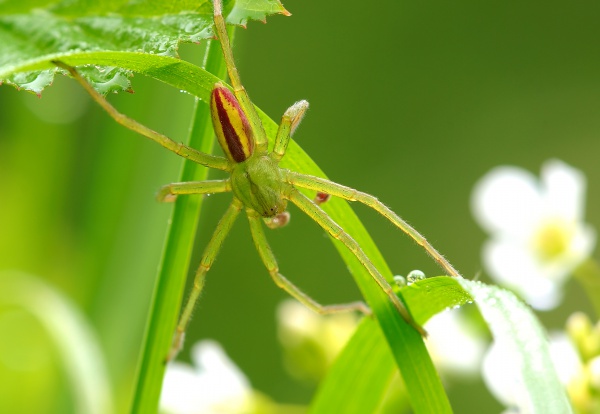Facts About Micrommata virescens
Meet the green huntsman spider, scientifically known as Micrommata virescens. This intriguing arachnid is a member of the Sparassidae family, commonly found across Northern and Central Europe, including countries like Denmark and southern Britain.
Female green huntsman spiders are larger, with bodies measuring between 12 to 16 millimeters, while males are somewhat smaller, ranging from 7 to 10 millimeters in length. Females are easily distinguishable by their radiant green cephalothorax and long legs, complemented by a lighter green abdomen adorned with a darker green stripe running down the center. Males, in contrast, exhibit a dark green-olive coloration with distinctive patterns.
These spiders tend to inhabit forest edges, dry meadows, and damp woodland clearings. They favor grass and lower tree branches as their preferred habitats. Unlike many spiders, Micrommata virescens does not spin webs to capture prey. Instead, they are diurnal hunters, active during the day. They rely on their remarkable green camouflage to blend seamlessly into the vegetation and ambush unsuspecting insects.
The secret behind their vivid green color is a substance called micromatabilin, present in their body fluids and tissues. Reaching maturity is a slow process for these spiders, taking about 18 months. Female green huntsman spiders typically reach maturity from May to September. After mating, the males die, leaving the females to undertake the crucial task of guarding their eggs.
Females create egg sacs and cleverly enclose them in leaves stitched together. They vigilantly guard these cocoons until, about four weeks later, approximately 40 to 50 young spiders emerge. Thus, the life cycle of the green huntsman spider continues, ensuring their presence in the lush greenery they inhabit.

 Ireland
Ireland